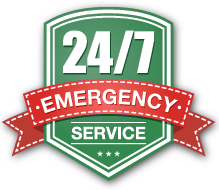Today we are going to continue offering an education on some of the more interesting elements in the world of plumbing. In our previous blog we discussed waste vents, which help to dispose of noxious gasses and fumes which reside in the home plumbing system. Today, we will discuss something even messier – septic tanks. When you work as a plumbing, sometimes things get messy. Working with septic tanks can be one of those times.
What is a Septic Tank?
Almost every building in the city is connected to the municipal sewage system. When you flush waste down the toilet, it travels through your pipes, to the municipal sewage system, and you get to say good bye to it forever. That is the ideal situation! If you live far from the city, or have a cabin up in the woods you may not be so lucky. You may not be connected to a sewage system at all. If that is the case, you are likely using a septic tank. A septic tank is an alternative way to dispose of waste if you are not connected to a sewage system.
How does the Septic Tank work?
When you flush, the waste will travel through traditional piping away from the home to the septic tank. Solid waste falls to the bottom of the septic tank where it will break down and deteriorate over time. Chemicals may be used to speed this process up, but they are not necessary. Liquid waste travels past the septic tank is and released into a drainage field. The liquid waste is absorbed in the ground where it undergoes a natural purification process. Occasionally, solid objects can cause clogs in septic tanks, or they can overflow if waste has not broken down fast enough. Routine maintenance will address this issues and they should be of no concern.



